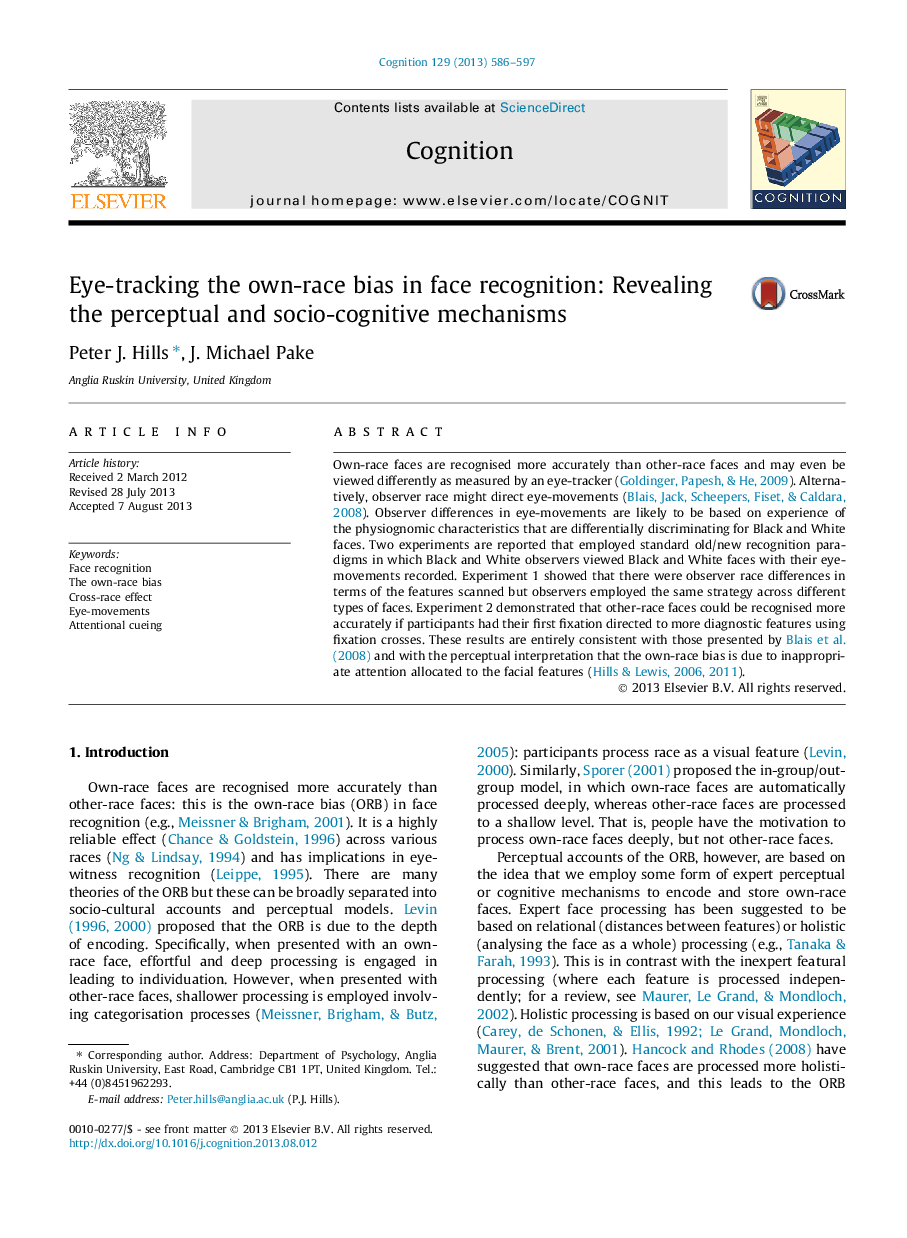| Article ID | Journal | Published Year | Pages | File Type |
|---|---|---|---|---|
| 10457600 | Cognition | 2013 | 12 Pages |
Abstract
Own-race faces are recognised more accurately than other-race faces and may even be viewed differently as measured by an eye-tracker (Goldinger, Papesh, & He, 2009). Alternatively, observer race might direct eye-movements (Blais, Jack, Scheepers, Fiset, & Caldara, 2008). Observer differences in eye-movements are likely to be based on experience of the physiognomic characteristics that are differentially discriminating for Black and White faces. Two experiments are reported that employed standard old/new recognition paradigms in which Black and White observers viewed Black and White faces with their eye-movements recorded. Experiment 1 showed that there were observer race differences in terms of the features scanned but observers employed the same strategy across different types of faces. Experiment 2 demonstrated that other-race faces could be recognised more accurately if participants had their first fixation directed to more diagnostic features using fixation crosses. These results are entirely consistent with those presented by Blais et al. (2008) and with the perceptual interpretation that the own-race bias is due to inappropriate attention allocated to the facial features (Hills and Lewis, 2006, Hills and Lewis, 2011).
Related Topics
Life Sciences
Neuroscience
Cognitive Neuroscience
Authors
Peter J. Hills, J. Michael Pake,
